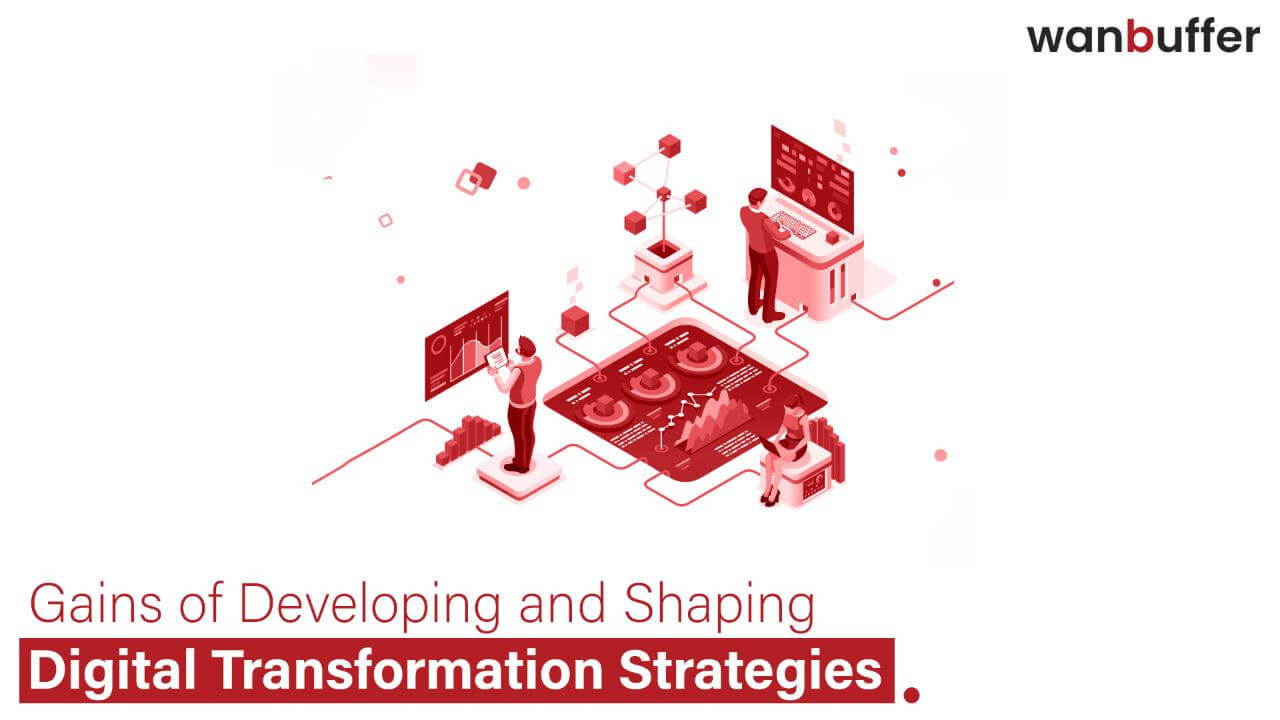
The term “digital transformation” refers to the blending of various digital technologies across all business disciplines. It facilitates the advantages of digitization and causes fundamental changes to the various company techniques.
Businesses can enhance legacy operations through digital transformation, enable efficient workflows, strengthen security, increase profitability, and take advantage of digitization’s advantages.
Changes brought forth by digital transformation affect an organization’s current culture as well as its systems, practices, and workflow. Every level of an organization is affected by this transition, which also collects data that can interact.
Organizations can connect the dots on the client journey in a way that wasn’t likely before by achieving the benefits of digital transformation through workflow automation and contemporary data processing by Utilizing tools like machine learning andartificial intelligence(AI) (ML).
We will investigate ways to combine cutting-edge business strategies with digital strategies to improve the results of digital transformation.
Increased job efficiency and employee mental health are now expressly crucial given that many team members work remotely.
Making sure that processes can be enhanced to reduce workarounds requires developing digital transformation strategies that include embracing digital technologies like AI and ML. Workflows can be streamlined and automated with the use of digital technologies.
It reduces physical labor, cuts down on mistakes, and raises performance standards. Condensing team execution time allows for more time to be spent on work of higher quality, which lowers stress levels.
Better agility comes along with increases in automation and increased productivity. Organizations may only genuinely become agile inside projects and operational areas by developing a digital strategy.
Teams throughout your entire firm will become agile if you enable digital tools that perform important work throughout your operations. The advantages of digitization speed up project deliverables, allow for clear analytics in reports, and improve decision-making.
Most millennials today interact online, and they are a significant demographic. That implies that your company must incorporate contemporary internet platforms into the commercial tactics. Accepting digital transformation strategies will allow you to satisfy their evolving needs and expectations.
By integrating contemporary chatbots and engagement tools, it places your business where customers are using social media and service platforms. Making it simple for customers to enable digital buying, banking, engagement, and doing business much more nimbly is all about the customer experience and how customers perceive your organization.
Most millennials today interact online, and they are a significant demographic. This means that your company must incorporate contemporary internet platforms into its commercial tactics. By embracing digital transformation strategies, you can meet their evolving needs and expectations.
By integrating contemporary chatbots and engagement tools, you place your business where customers are using social media and service platforms. Making it simple for customers to engage with digital buying, banking, and doing business is all about the customer experience and how they perceive your organization.
According to our expertise, new business prospects have emerged and been successful in a variety of markets. While there is increased competition as business opportunities grow, you can overcome a variety of challenges and put your company in a position to grow and outperform its competitors by developing a digital transformation strategy.
Rethinking current approaches also encourages the discovery of ideas that may not have been previously imaginable, as well as the cutting-edge technologies that can make them a reality.
A digital strategy provides a blueprint for navigating ambiguity, the speed of change, shifting customer expectations, and maximizing profitability with precision technologies.
While examining the potential for digital transformation, businesses with high levels of digital maturity are able to generate significantly greater ROIs, higher levels of revenue, and higher profit margins than the industry averages.
We talked about the benefits and justifications for digital transformation, and now we’ll see how developing cutting-edge tactics can facilitate the benefits of digital transformation procedures.
The majority of firms amass massive amounts of consumer data sets, but the real benefit comes from utilizing this data for research that can advance the company. A system for gathering precise data and superior-level integration of it for business intelligence is created via digital transformation.
Through the use of digital transformation, several functional departments within an organization can interpret raw data into insights across numerous touchpoints. By doing this, a single view of the customer journey, business operations, financials, and relevant business possibilities is produced.
Understanding how to give your clients the best autonomy over their own data sets as part of your digital transformation can help you use data privacy as a competitive differentiator.
Insights and resources are combined through digital transformation to provide a set of tools for growing business. Instead of separate databases and software, it merges corporate resources and reduces vendor overlap.
It would be beneficial if you used digital transformation strategies to integrate software, databases, and apps into a repository for business intelligence.
Neither a division nor a unit, digital transformation is. It involves every aspect of a corporation and can result in the upgrading of processes across several departments.
Sensitive data sets are used by all departments, including operations, sales, and marketing. Data must be optimized and protected wherever it travels, and teams must be given simple-to-use technology tools to complete their responsibilities.
Unlocking customer insights requires data. You may create a precise company strategy that is more customer-centric by having a better understanding of your customers and their needs.
Utilizing both structured and unstructured data sources, such as social media analytics and data, these insights can help direct the expansion of operations and businesses.
Digital transformation fosters a digital culture by providing your workers with precise tools and environment-specificcustomization.
These solutions help the entire organization advance digitally while also providing a more united approach to collaboration.
For firms to continue to be sustainable, this digital cultural transition is essential. It enables upskilling and the development of teams’ digital expertise so they can profit more from digital transformation.